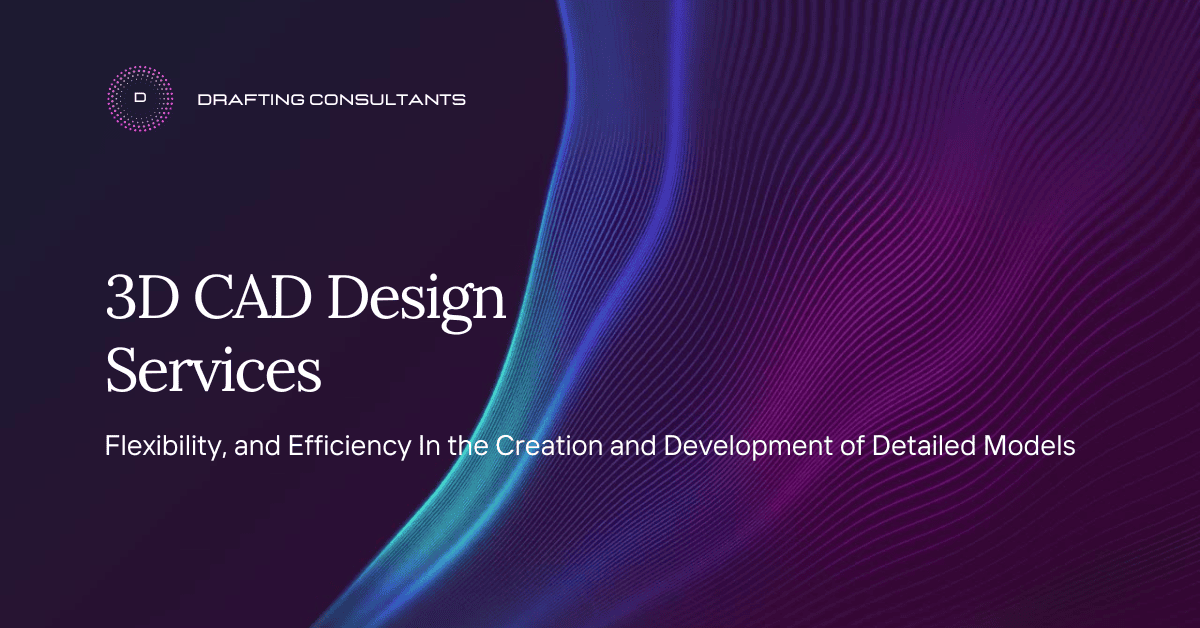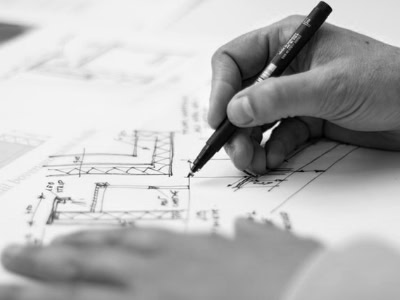
The world is changing fast, and sustainability and environmental protection are major objectives. Businesses in all sectors are under pressure to implement environmentally friendly ways in their everyday activities. Sustainable growth is becoming a must for competitive and responsible businesses. Innovative design tools are one of the finest strategies to maintain progress. These tools aren't simply new technology; they're a new way to design and develop faster, more accurate, and greener solutions.
This detailed article explains how sophisticated design techniques may boost long-term growth. From old-fashioned drafting design services to modern 3D CAD design services, this looks at how these technologies have developed, influenced diverse areas, and assisted in achieving sustainability goals. Businesses may foster innovation and lessen their environmental effect by using and understanding these sophisticated design techniques.
Design and construction have relied on drafting design services for centuries. For a long time, drawing comprehensive plans and diagrams by hand using pencil and paper was common. Hand drafting worked but had issues. For instance, there was a lot of potential for error, design revisions took a long time, and prototypes wasted a lot of material.
Digital technology has transformed sketching and design. Today, they employ powerful digital tools instead of manual instruments. Modern drafting design services employ high-tech equipment for accuracy and speed. Digital technologies provide automated measurement, error detection, and real-time collaboration, making the design process more precise and structured.

Drafting Design Services enable artists to create and develop ideas virtually, reducing the need for prototypes. This improvement reduces waste and speeds up planning. Because digital drafting eliminates many physical drawings, the design process has less global impact.
Since cloud-based tools and shared software were joined, design teams operate differently. Remote parties may now collaborate in real-time, making communication and coordination easier. Real-time collaboration ensures design changes are shared appropriately and reduces errors, promoting project management sustainability.
In addition to these benefits, digital drafting design services assist in creating environmentally friendly designs. Advanced tools let designers model and examine project components involving energy and material utilization. This tool helps you choose greener options that work and benefit the environment.
When 3D CAD was introduced, design technology changed. However, 3D CAD design services allow for more accurate and complete project visualization. This technology has transformed how designs are conceived, tested, and created.
Online testing and models are a highlight of 3D CAD design services. Designers may create sophisticated 3D models and test their ideas in a virtual world. This feature helps you thoroughly test and enhance items before manufacturing, reducing costly design revisions and manufacturing errors.
Used 3D CAD design services produce more accurate outcomes. Visualizing designs in three dimensions ensures every detail is displayed precisely, reducing manufacturing errors and misalignments. This precision improves products and reduces costly repairs and redo's.
When searching for "3D CAD design services near me," organizations can find industry-specific solutions. These services usually consider local laws to ensure designs match local standards. Local enterprises can provide customized design solutions for businesses. This also boosts the local economy.
Sustainable development is supported by 3D CAD design services that maximize material consumption and minimize waste. Models and analysis help designers discover and remove excess material, making production more efficient. This strategy reduces material consumption and helps achieve sustainable goals by reducing environmental impact.
Simulation tools are essential to current design because they reveal how concepts operate and react. These technologies let designers create simulations of real-life events and test their designs in different contexts, revealing potential issues and opportunities.
Advanced modeling technologies let designers test and investigate in virtual environments. Before production, designers may examine how stress, temperature, and fluid dynamics impact their plans and make any necessary revisions. This predictive approach helps identify potential issues early in the design phase, reducing costly mistakes and revisions.
For sustainable growth, modeling tools help maximize resource utilization and reduce waste. Simulation tools show designers how alternative materials and design configurations function to find the optimal balance of lifetime, efficiency, and environmental impact. The approach can produce functional and environmentally friendly products.
Simulation tools provide designers with additional information to make decisions, streamlining design work. Predictive analysis and sophisticated models reduce trial and error, minimizing development time and resources and speeding up planning. This increased pace helps conclude projects faster and structure the development process, supporting long-term growth.
Advanced design tools and eco-friendly procedures are ideal for long-term growth. Drafting design, 3D CAD design, and modeling technologies combined with eco-friendly concepts may help businesses create innovative, eco-friendly solutions.
This combo emphasizes eco-friendly items and processes. Modern design tools help artists and designers assess the environmental impacts of materials and production techniques, helping them make greener choices. Designers may utilize modeling tools to evaluate energy-efficient materials and locate the greenest ones.
Consider adding energy-saving measures to the design. Advanced planning tools can model and analyze building, product, and system energy usage. Makers may employ sustainable energy, adequate insulation, and low-energy parts to create energy-efficient and greenhouse gas-reducing solutions.
Design efficiency also requires collaboration. Modern design technologies enable real-time collaboration, improving communication and teamwork. This collaboration ensures everyone shares sustainability goals and may provide solutions that benefit people and the environment.
Using eco-friendly design tools can improve design efforts overall. By combining cutting-edge technologies with environmental care, businesses may expand sustainably. This technique makes design initiatives more helpful and makes firms sustainable growth leaders.
Real-life case studies show how modern design tools have helped sustain development. These technologies have inspired new ideas and eco-friendly solutions in several industries.
The auto industry has improved automobile manufacturing with 3D CAD design services. Automakers utilize 3D modeling and training to develop fuel-efficient and environmentally friendly automobiles. These advances have made automobiles lighter, more efficient, and quicker, reducing petrol usage and emissions. This strategy supports sustainability goals and illustrates how design tools may help the globe.
Architecture and construction have employed draft design and advanced modeling techniques to produce energy-efficient buildings. These applications let architects and builders model buildings, calculate energy usage, and incorporate green elements like solar panels and roofs. This strategy reduces environmental impact and saves electricity. It demonstrates sustainable growth with modern planning techniques.
Consumer goods businesses are using advanced planning technologies to produce eco-friendly products. Companies develop high-quality, eco-friendly goods by considering how resources are utilized, simplifying concepts, and adding eco-friendly features. This extends supply line life and helps the globe meet environmental goals.
These case studies demonstrate how sophisticated design tools can transform and sustain growth. By employing these technologies, businesses may improve efficiency, performance, and environmental impact. These sectors' triumphs demonstrate how modern design tools may generate sustainable concepts.
A diversified approach that blends eco-friendly concepts and cutting-edge technology is needed to accomplish sustainable growth using design tools. From Drafting Design Services to 3D CAD design services, design technology has improved speed, accuracy, and resource usage. These technologies and safe practices help businesses innovate and reduce their environmental impact.
The future of design and engineering depends on how these technologies improve, which implies more sustainable development opportunities. Advanced planning techniques will remain crucial as organizations worldwide balance expansion and environmental protection. Businesses may be the first to develop eco-friendly solutions that improve their processes and the environment by using these technologies.